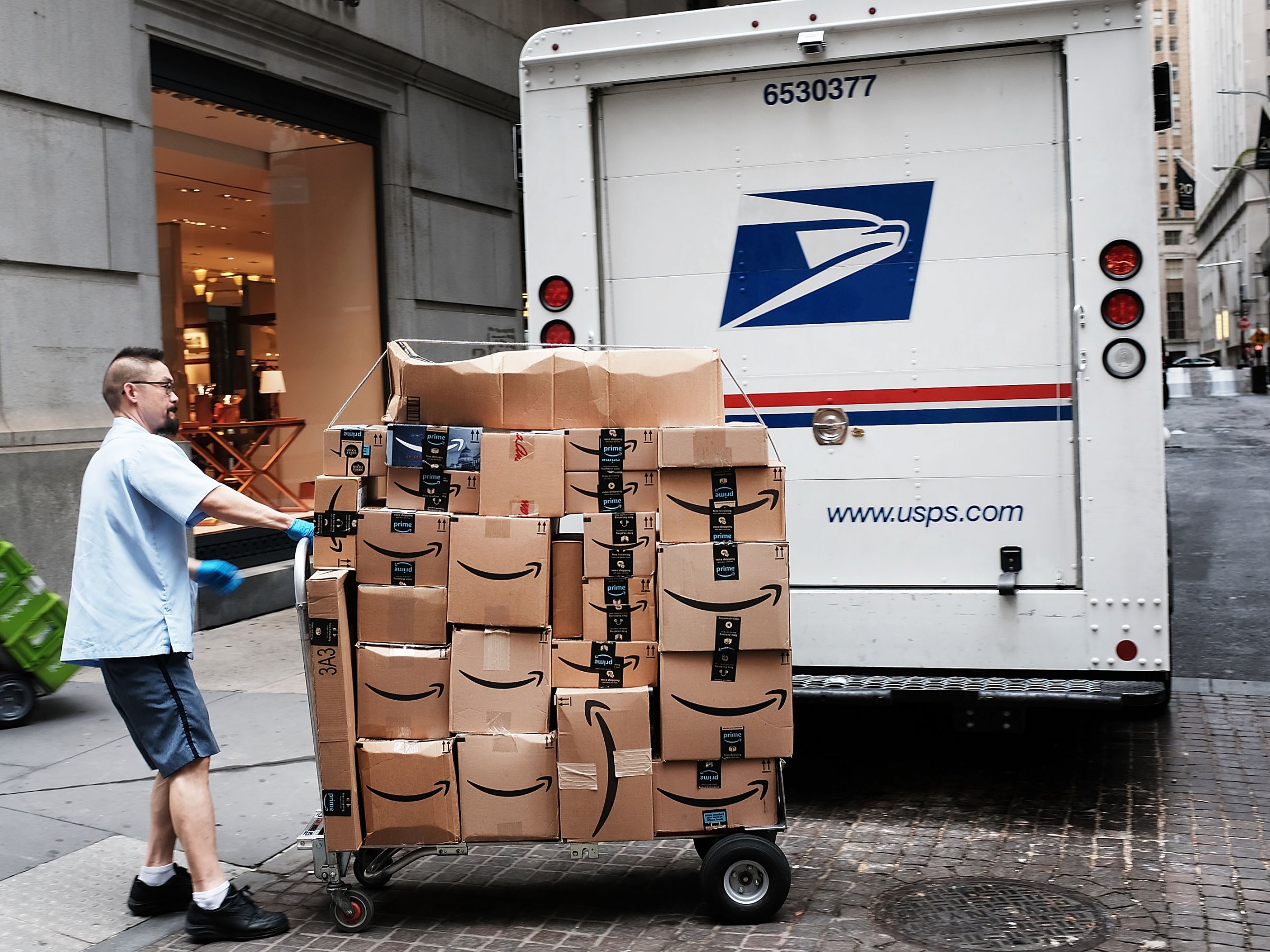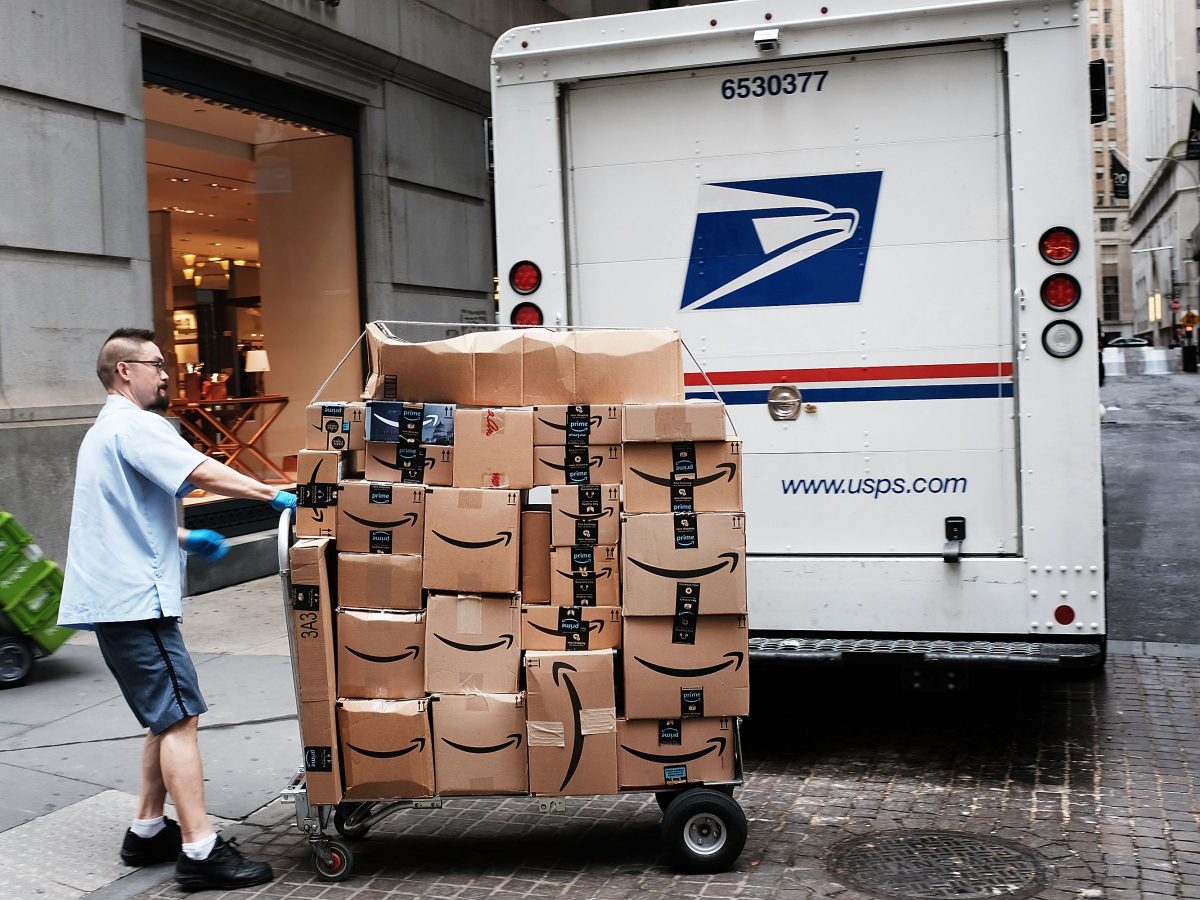 Spencer Platt/Getty Images
Spencer Platt/Getty Images
- Amazon and Walmart are “taking aim at each other” with their respective pushes into physical retail spaces and digital commerce, Loup Ventures managing partner Andrew Murphy said in a new post.
- “We believe a retail duopoly is emerging” between the two retail players, Murphy wrote.
It’s clear in the retail space that companies either have to adapt to consumers’ shifting tastes, or suffer.
Loup Ventures, a venture capital firm with a focus on technology companies, just called for what could turn out to be an even starker development featuring two dominant faces of the changing landscape — Amazon and Walmart.
“Amazon is growing its physical retail business to better compete with Walmart; Walmart is growing its online retail business to better compete with Amazon. We believe a retail duopoly is emerging,” Andrew Murphy, managing partner at the venture capital firm, said in a post late Thursday.
Murphy looked at the two companies’ aggressive expansions away from their own core businesses over the last two or so years, starting with when Walmart acquired Jet.com in 2016.
On Thursday, Walmart announced another acquisition in the digital commerce space, buying Art.com, which it described as the world’s largest online retailer “in the art and wall décor category,” for an undisclosed price. Some of Walmart’s notable digital deals since 2016 have included Modcloth, Bonobos, Flipkart, and Bare Necessities.
Meanwhile, Amazon has ratcheted up its physical retail presence since acquiring Whole Foods in 2017.
It opened three Amazon Go stores in Seattle between January and September of this year, and opened its first four-star store in New York in late September. The Seattle-based giant also said in September it would acquire a stake in Indian supermarket chain More.
Murphy said his firm’s prediction earlier this year that Amazon would acquire Target in 2018 was wrong, at least with about three weeks left in the year.
“We continue to believe the combination makes sense, however, because Amazon needs to acquire Target-like footprints (1,800 stores) in order to continue its growing retail presence,” he said.
The market has rewarded Amazon this year, with its shares up 43%, while it’s punished Walmart, shares of which have fallen 4% in the same time. Walmart is well off its 52-week lows, however, while Amazon has sunk from its recent all-time high.
Now read:

